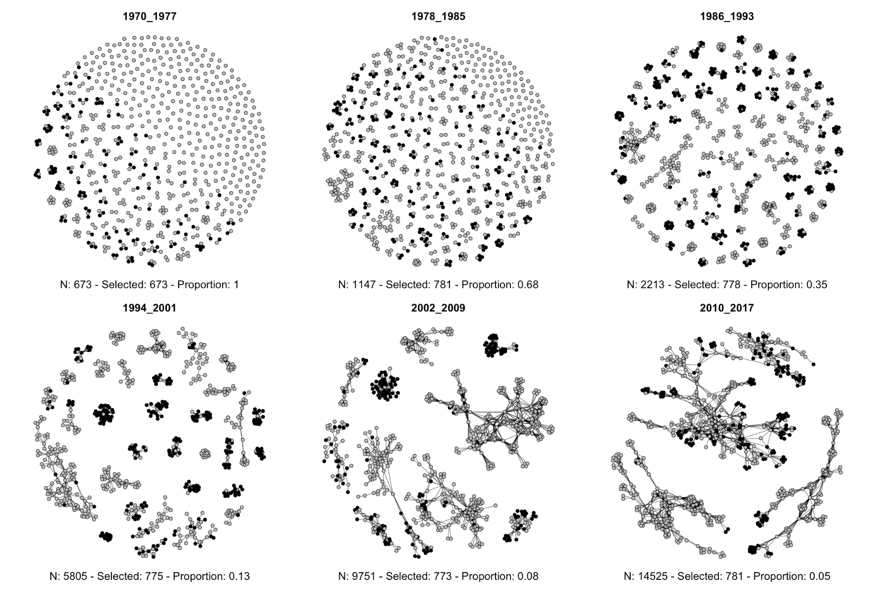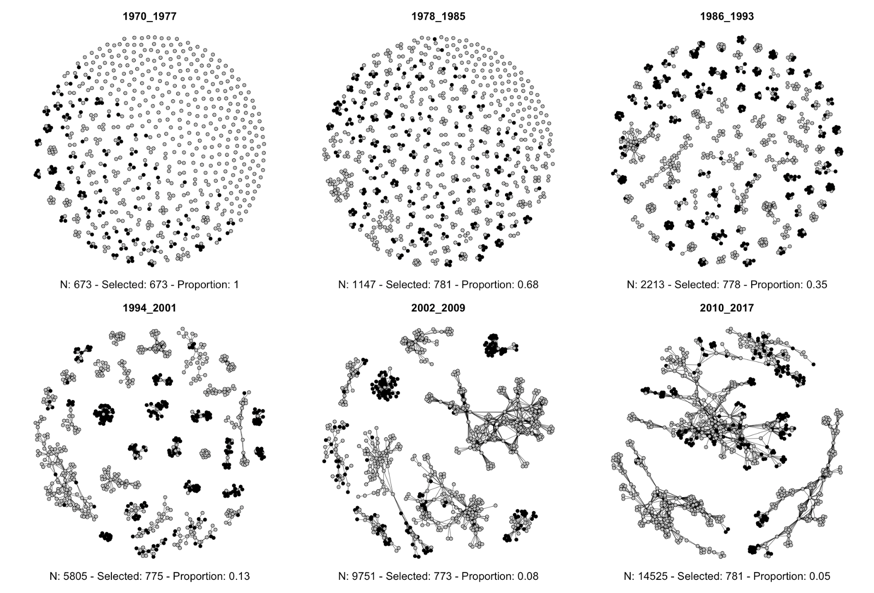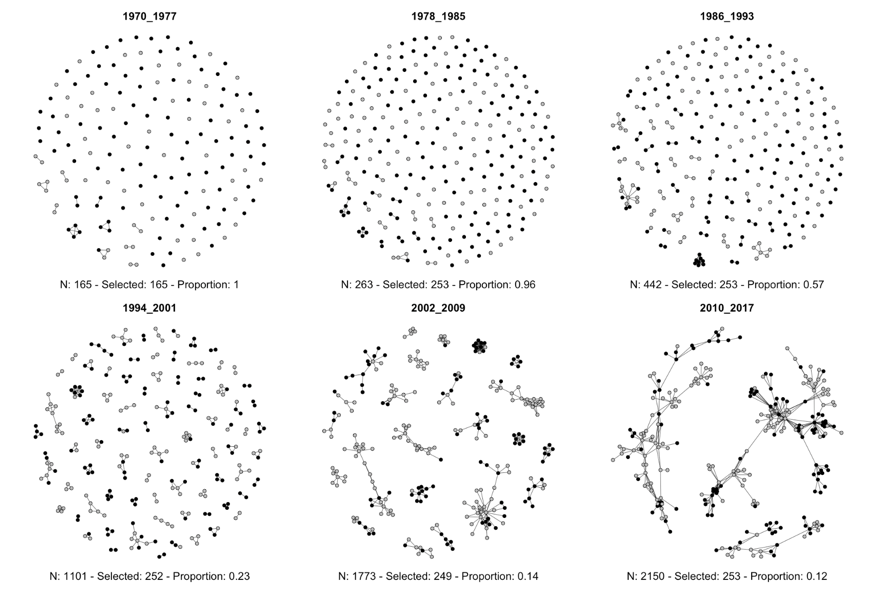- About
- Methods & Sources
- Community

Thursday, May 21, 2020 - 12:01
Invention and Collaboration Networks in Latin America: Evidence from Patent Data
Carlos Bianchi*, Pablo Galaso**, and Sergio Palomeque***
Our research aims to analyze the collaboration networks associated with the processes of invention and patenting in Latin American countries between 1970 and 2017. We build and analyze three types of collaboration networks: networks of inventors, networks of innovators (i.e. patent owners) and networks of countries in the region. The study of the structural properties and the evolution of such networks allow us to present unprecedented empirical evidence on the forms of interaction and collaboration to invent in Latin America. This evidence shows that collaboration networks in Latin America are highly fragmented and disconnected. Moreover, networks are notoriously foreign-oriented, i.e. the linkages with external nodes are critical compared to the low presence of local connections. The contributions of this work are three-fold. First, it presents novel empirical findings with unique information on interaction patterns at the Latin American level. Second, it allows analyzing the whole region and the main trends in the light of the large research background on invention and development from this region. Finally, it discusses some stylized facts in national cases, with the aim of encouraging new research questions for further research agenda.
Some relevant findings
Network graphs provide us a first sight of the overall connectivity in co-invention (Figure 1) and co-innovation (Figure 2) networks. Both types of networks are very fragmented in separate components, especially in the case of innovation networks. This finding implies that, at the Latin American level, there is no single and cohesive system of actors interacting and collaborating to produce patents. The Latin American reality seems to be made of, rather, a constellation of separate groups of inventors and innovators that, either form independent teams, or collaborate with absolutely no one.

Source: authors based on PatentsView data. Note: grey nodes are inventors located in Latin America, black nodes are inventors located outside Latin America. For the sake of clarity, we present only the best-connected sections of the networks, where the largest components are located. Below each graph, the following data is presented: the total number of nodes in the network (N), the number of nodes represented in the graph (Selected) and the proportion represented by the nodes plotted against the total number of nodes of the network.

Source: authors based on PatentsView data. Note: grey nodes are innovators located in Latin America, black nodes are located outside Latin America. For the sake of clarity, we present only the best-connected sections of the networks, where the largest components are located. Below each graph, the following data is presented: the total number of nodes in the network (N), the number of nodes represented in the graph (Selected) and the proportion represented by the nodes plotted against the total number of nodes of the network.
(*) Instituto de Economía, Universidad de la República, Uruguay, email: cbianchi@iecon.ccee.edu.uy
(**) Instituto de Economía, Facultad de Ciencias Económicas y Administración, Universidad de la República, email: pgalaso@iecon.ccee.edu.uy. Principal investigator
(***) Facultad de Ciencias Económicas y Administración, Universidad de la República, email: spalomeque@ccee.edu.uy [U1]
Download the full paper at: http://www.iecon.ccee.edu.uy/download.php?len=es&id=724&nbre=dt-04-20.pdf&ti=application/pdf&tc=Publicaciones
